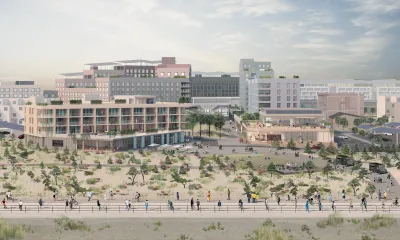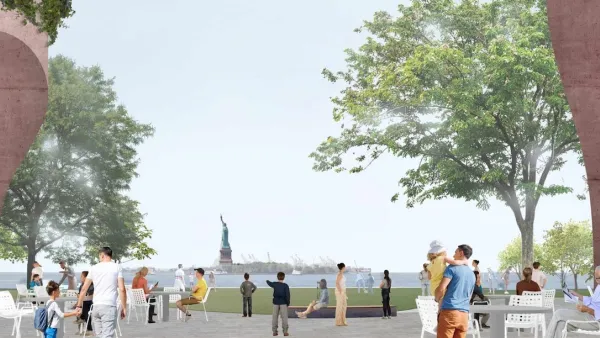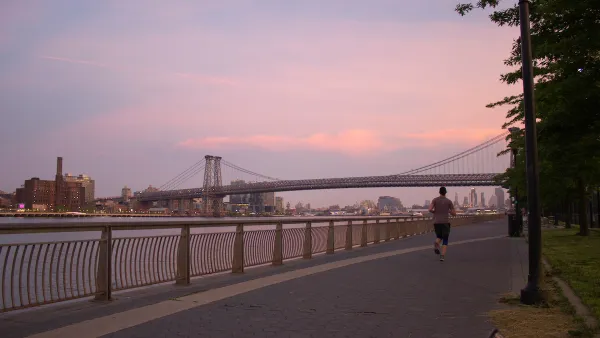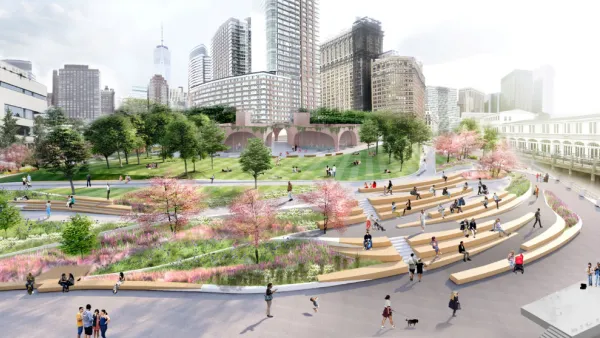The project, which relies largely on geothermal energy to minimize its carbon footprint, will bring affordable housing and boost storm resilience to an area devastated by Hurricane Sandy.

A $1-billion project on New York's Rockaway peninsula promises to be the city's first net-zero community, according to an article by Aysha Diallo. "The development will incorporate geothermal heating, passive house design to optimize energy efficiency, and a plan to raise the storm surge elevation, given the land’s vulnerability to flooding."
"The site, named Arverne East, is expected to have 1,650 units of housing, 1,320 of which are designated as affordable for formerly homeless, low, moderate and middle-income households. The design incorporates a range of green spaces, including a 35-acre nature preserve and an urban farm," writes Diallo.
As with similar redevelopment efforts, some residents worry the new development will deepen the socio-economic divide and drive up housing costs. "Compared to the west side of the peninsula, which has long been a summer getaway spot for middle- to upper-class city residents, these neighborhoods have larger minority populations and have historically fallen behind." But others hope the project will also bring much-needed economic development.
The developers will also shore up the peninsula's flood defenses, building resilience against future events like Hurricane Sandy. "The developers plan to elevate the land between three and eight feet, depending on location, so that ground floor spaces across the property are elevated by a total of 16 feet or more — higher than Hurricane Sandy’s storm surge of 14 feet."
Arverne East is the result of a years-long design and selection process that culminated in the current design by L+M Development Partners, the Bluestone Organization and Triangle Equities.
FULL STORY: NYC’s First Net Zero Community Brings Housing to Storm-Ravaged Neighborhood

National Parks Layoffs Will Cause Communities to Lose Billions
Thousands of essential park workers were laid off this week, just before the busy spring break season.

Retro-silient?: America’s First “Eco-burb,” The Woodlands Turns 50
A master-planned community north of Houston offers lessons on green infrastructure and resilient design, but falls short of its founder’s lofty affordability and walkability goals.

Delivering for America Plan Will Downgrade Mail Service in at Least 49.5 Percent of Zip Codes
Republican and Democrat lawmakers criticize the plan for its disproportionate negative impact on rural communities.

Test News Post 1
This is a summary

Test News Headline 46
Test for the image on the front page.

Balancing Bombs and Butterflies: How the National Guard Protects a Rare Species
The National Guard at Fort Indiantown Gap uses GIS technology and land management strategies to balance military training with conservation efforts, ensuring the survival of the rare eastern regal fritillary butterfly.
Urban Design for Planners 1: Software Tools
This six-course series explores essential urban design concepts using open source software and equips planners with the tools they need to participate fully in the urban design process.
Planning for Universal Design
Learn the tools for implementing Universal Design in planning regulations.
EMC Planning Group, Inc.
Planetizen
Planetizen
Mpact (formerly Rail~Volution)
Great Falls Development Authority, Inc.
HUDs Office of Policy Development and Research
NYU Wagner Graduate School of Public Service





























